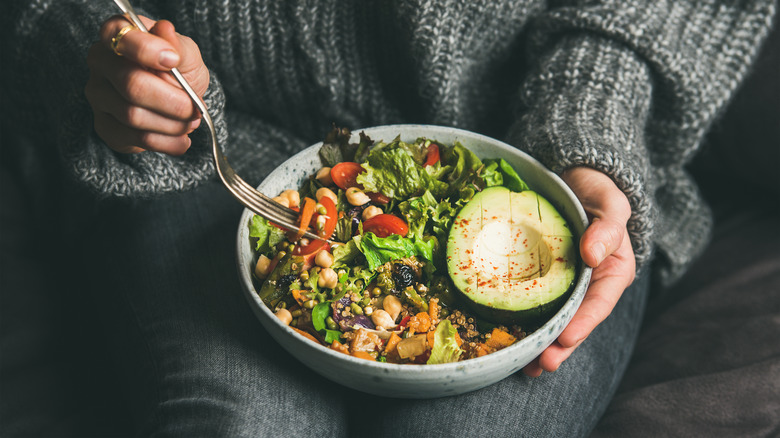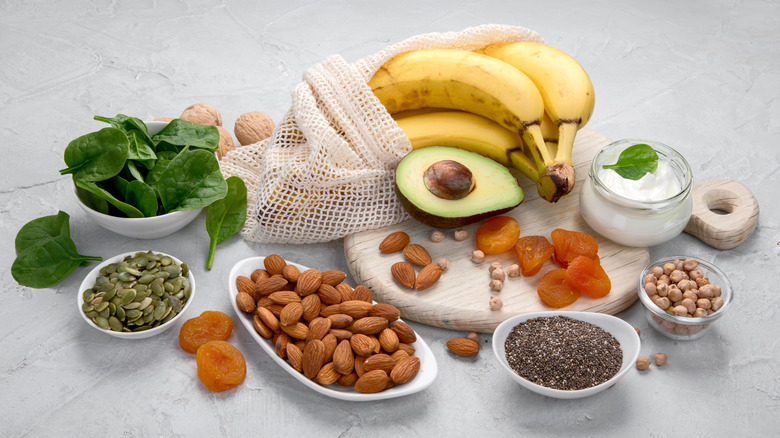The Base Components To Create A Balanced Grain Bowl
Not sure what to make for lunch? One of the easiest meals to put together, whether on the spot or as part of Sunday meal prep, is a grain bowl. Grain bowls are extremely versatile, as you can draw inspiration from almost any cuisine you can think of when building your bowl. Craving fresh West Coast flavors? Try making this California Avocado Grain Bowl featuring quinoa, corn, zucchini, and of course, avocado. In the mood for Caribbean food? Throw rice, mango salsa, and jerk chicken in a bowl, and you have a tangy, spicy meal (via 40 Aprons).
Not only are grain bowls filled with flavor, but you can make them as healthy as you want. A more filling alternative to salads, grain bowls pack in a plethora of different nutrients. And according to Healthline, healthy bowls are more likely to actually get eaten because they can cater to different peoples' preferences. Maybe that's why a 2018 report showed that grain bowls' popularity had risen by 89% over the previous four years and that quick-service restaurants added grain bowls to their menus almost 46% faster than before (via Simplot Foods).
If you're not sure where to start, there is an easy-to-remember formula that works as a baseline for building a delicious, nutritious grain bowl.
A balanced grain bowl includes these 3 things
When it comes to building a grain bowl, these are the three elements you need to know, according to Real Simple: carbohydrates, protein, and fat. As long as you include foods with those three nutrients, you'll have a balanced bowl. The good news is that there is a myriad of foods in each category, so you can pick the ones you like best.
For carbohydrates, quinoa is a popular option, but there are so many others you can experiment with — think farro, rice, millet, freekeh, wheat berries, or spelt berries (via The Kitchn). Whichever one you choose, Food52 recommends cooking it in chicken or vegetable broth for extra richness.
Next, pick the protein of your choice. Chicken and salmon are always safe choices, but if you're vegetarian or vegan, you can add an egg, tofu, tempeh, edamame, and more.
And while fat may sound like something that should stay out of a healthy meal, the Food Network explains that some vitamins, like A and D, need to be paired with fats in order for your body to absorb them. For healthier options, try avocados, olive oil, and nuts.
While carbohydrates, fat, and protein are the building blocks of a grain bowl, they're also the main nutrients our body needs to preserve its structure, according to Real Simple. So when you're eating a grain bowl, you're really promoting healthy growth within yourself and giving your body the sustenance it needs.

